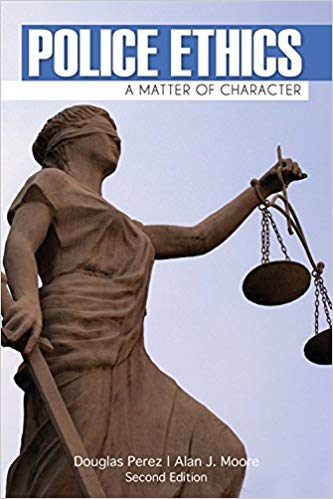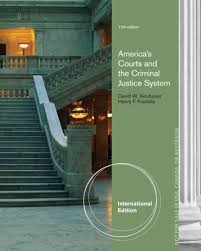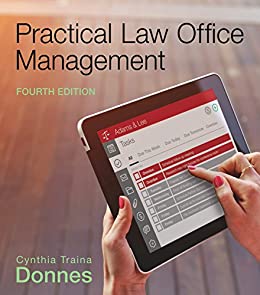Description
Test Bank For Police Ethics 2nd Edition by Douglas W. Perez
Chapter 3-The Nature of Police Work
Police Ethics: A Matter of Character, 2nd Edition
TRUE/FALSE
1.Everyone who experiences police work develops at least some level of frustration due to the fact that the job is replete with paradox.
ANS: T PTS: 1 REF: pg. 42
2.The paradoxes of coercive power are the only paradoxes faced by police officers.
ANS: F PTS: 1 REF: pg. 42
3.The duties that police are supposed to accomplish and the roles that they are supposed to play are multiple, conflicting, and vague.
ANS: T PTS: 1 REF: pg. 43
4.The three main functions of police (enforce the law, maintain order, provide services to the community) rarely conflict with each other.
ANS: F PTS: 1 REF: pg. 43
5.Because of how the criminal justice system operates, the police can be at odds with its due process principles.
ANS: T PTS: 1 REF: pg. 44
6.Stereotyping in and of itself is an operational principle of life.
ANS: T PTS: 1 REF: pg. 44
7.Police officers, like others in the criminal justice system, tend to “normalize crime.”
ANS: T PTS: 1 REF: pg. 44
8.By keeping some distance from the population they police, the police can appear callous and uncaring.
ANS: T PTS: 1 REF: pg. 46
9.The overwhelming majority of people hold stereotypes about the police.
ANS: T PTS: 1 REF: pg. 46
10.Muir labeled five paradoxes of coercive power.
ANS: F PTS: 1 REF: pg. 48
MULTIPLE CHOICE
1.The duties that police are supposed to accomplish and the roles they are supposed to play are
|
a. |
multiple |
c. |
vague |
|
b. |
conflicting |
d. |
all of the above |
ANS: D PTS: 1 REF: pg. 43
2.The three major functions of the police are to
|
a. |
enforce the law |
c. |
provide services to the community |
|
b. |
maintain order |
d. |
all of the above |
ANS: D PTS: 1 REF: pg. 43
3.The three major functions of the police include each of these except:
|
a. |
enforce the law |
c. |
protect VIPs |
|
b. |
maintain order |
d. |
provide services to the community |
ANS: C PTS: 1 REF: pg. 43
4.If police observe drug use at a huge, orderly rock concert, or deal with a large group of underage drinkers at an otherwise calm and controlled fraternity party, the
|
a. |
law enforcement function is in direct conflict with the order maintenance function |
|
b. |
law enforcement function is in direct conflict with the service to the community function |
|
c. |
order maintenance function is in direct conflict with the service to the community function |
|
d. |
none of the above |
ANS: A PTS: 1 REF: pg. 43
5.On the street, the police must focus on substantive guilt. In the courts, the focus is on
|
a. |
substantive guilt |
c. |
procedural guilt |
|
b. |
who has the best lawyer |
d. |
civil rights |
ANS: C PTS: 1 REF: pg. 44
6.Officers tend to normalize things. This might include
|
a. |
how a beat looks |
|
b. |
who belongs in a beat and who doesn’t belong |
|
c. |
traffic flow at a given time of day |
|
d. |
all of the above |
ANS: D PTS: 1 REF: pg. 44
7.“Symbolic assailants” means
|
a. |
guns and other weapons |
|
b. |
any person on the street could pose a danger |
|
c. |
terrorists |
|
d. |
none of the above |
ANS: B PTS: 1 REF: pg. 45
8.Traffic stops
|
a. |
often end in violent confrontations |
c. |
often end in injury or death |
|
b. |
rarely end in violent confrontations |
d. |
none of the above |
ANS: B PTS: 1 REF: pg. 45
9.Which of the following is not a common stereotype held by the public about police?
|
a. |
they are overly aggressive and authoritarian |
|
b. |
they are both intelligent and well-educated |
|
c. |
they are racial and religious bigots |
|
d. |
they are anti-gay and lesbian homophobics |
ANS: B PTS: 1 REF: pg. 46
10.Every day the police are confronted by questions about whether they should
|
a. |
arrest and/or use force |
c. |
eat a doughnut |
|
b. |
use deadly force |
d. |
engage in a high speed pursuit |
ANS: A PTS: 1 REF: pg. 47
11.Muir defined coercion as obtaining desired behavior from another by
|
a. |
arresting them |
|
b. |
threatening to harm something of value to them |
|
c. |
outright use of force |
|
d. |
pointing at pistol at them |
ANS: B PTS: 1 REF: pg. 48
12.Muir’s four paradoxes of coercive power are
|
a. |
dispossession, detachment, face, and irrationality |
|
b. |
dispossession, detachment, face, and rationality |
|
c. |
possession, detachment, face, and irrationality |
|
d. |
possession, detachment, face, and rationality |
ANS: A PTS: 1 REF: pg. 48
13.The paradox of dispossession means that
|
a. |
someone has nothing of value to threaten |
|
b. |
someone has detached themselves from caring about things of value |
|
c. |
the nastier one’s reputation, the less nasty one has to be |
|
d. |
the crazier the victim of coercion, the less effective the threat |
ANS: A PTS: 1 REF: pg. 48
14.The paradox of detachment means that
|
a. |
someone has nothing of value to threaten |
|
b. |
someone has detached themselves from caring about things of value |
|
c. |
the nastier one’s reputation, the less nasty one has to be |
|
d. |
the crazier the victim of coercion, the less effective the threat |
ANS: B PTS: 1 REF: pg. 49
15.The paradox of face means that
|
a. |
someone has nothing of value to threaten |
|
b. |
someone has detached themselves from caring about things of value |
|
c. |
the nastier one’s reputation, the less nasty one has to be |
|
d. |
the crazier the victim of coercion, the less effective the threat |
ANS: C PTS: 1 REF: pg. 49
16.The paradox of irrationality means that
|
a. |
someone has nothing of value to threaten |
|
b. |
someone has detached themselves from caring about things of value |
|
c. |
the nastier one’s reputation, the less nasty one has to be |
|
d. |
the crazier the victim of coercion, the less effective the threat |
ANS: D PTS: 1 REF: pg. 49
17.The second half of Muir’s paradox of irrationality is that
|
a. |
the crazier the victim, the more effective the threat |
|
b. |
the crazier the victim, the less effective the threat |
|
c. |
the crazier the coercer, the more effective the threat |
|
d. |
the crazier the coercer, the less effective the threat |
ANS: C PTS: 1 REF: pg. 49
18.The police use of a police dog would fit Muir’s
|
a. |
paradox of dispossession |
c. |
paradox of face |
|
b. |
paradox of detachment |
d. |
paradox of irrationality |
ANS: D PTS: 1 REF: pg. 50
19.Examples of people the police find difficult to coerce include all except
|
a. |
the drunk or stoned |
c. |
the homeless |
|
b. |
the sane |
d. |
people engaged in family disturbances |
ANS: B PTS: 1 REF: pg. 50
20.Examples of police paramilitarism include
|
a. |
chains of command |
c. |
ranks |
|
b. |
uniforms |
d. |
all of the above |
ANS: D PTS: 1 REF: pg. 51
21.Paramilitarism makes police
|
a. |
invisible |
c. |
less accountable |
|
b. |
have a sense of duty |
d. |
all of the above |
ANS: B PTS: 1 REF: pg. 51
22.A downside of police paramilitarism is
|
a. |
police humanize the citizenry |
|
b. |
the police command and control structure tends to work against individual problem-solving |
|
c. |
citizens like the police to be aloof, detached, and impersonal |
|
d. |
a lack of concern about officer appearance |
ANS: B PTS: 1 REF: pg. 51
23.The news media’s ongoing, symbiotic relationship with police means that police news coverage
|
a. |
is generally unfavorable |
c. |
is in short supply |
|
b. |
is generally favorable |
d. |
ignores police scandals |
ANS: B PTS: 1 REF: pg. 54
24.The “RCMP Syndrome”
|
a. |
means “the Mountie always gets his man” |
|
b. |
is synonymous with the Dirty Harry problem |
|
c. |
was coined by ex-LAPD sergeant-turned-novelist Joseph Wambaugh |
|
d. |
means “really corrupt mean police” |
ANS: A PTS: 1 REF: pg. 54
25.Officer anomie means
|
a. |
a strong feeling of connection between police and society |
|
b. |
Japanese cartoons about police |
|
c. |
a feeling of “normlessness,” a disconnect between police and society |
|
d. |
none of the above |
ANS: C PTS: 1 REF: pg. 55
ESSAY
1.Our discussion about stereotyping suggests that the police appear to the public to be “paranoid” much of the time. Why is this? What types of actions do the police take in the name of self-preservation that seem to be unrealistically worrisome? Is there anything the police can do about this appearance?
ANS:
Beginning at the police academy, police officers are trained to be suspicious and alert for danger.
PTS:1REF:Box 3.2 on pg. 45|pg. 46|Box 3.3 on pg. 47
2.What is the paradox of detachment? Why is it so important for American citizens to understand it in an era wherein we are fighting a war on terrorism? What are other examples of people who make themselves un-coercible (other than terrorists)?
ANS:
Those who have nothing to lose are difficult to coerce. This is especially true for suicide bombers who no longer value their lives.
PTS:1REF:pg. 49|Box 3.5 on pg. 49|Box 3.6 on pg. 51
3.What is the RCMP Syndrome? What are examples of other unrealistic images that are sent out to the public via the media? Why/how can this be frustrating for police officers?
ANS:
The Mountie always gets his man.
PTS: 1 REF: pg. 54|Box 3.8 on pg. 55
4.What is anomie? Do you know people who suffer from it? Do you think it is true that an inordinate number of police officers suffer anomic feelings? Why (or why not) do you agree with the authors about this?
ANS:
A feeling of normlessness, often associated with suicidal persons.
PTS: 1 REF: pg. 55
5.Construct an essay that utilizes both the kamikaze pilot and the 9/11 terrorist as examples of people who are largely impossible to coerce. Make specific reference to Muir’s paradox of detachment, and how the dynamics associated with this paradox are important for all American citizens to understand in today’s “war on terrorism” driven world.
ANS:
One must value his or her own life or be detached from it with nothing to lose and therefore difficult to coerce.
PTS: 1 REF: pg. 48|Box 3.5 on pg. 49|pg. 49-50|Box 3.6 on pg. 51





Be the first to review “Test Bank For Police Ethics 2nd Edition by Douglas W. Perez”